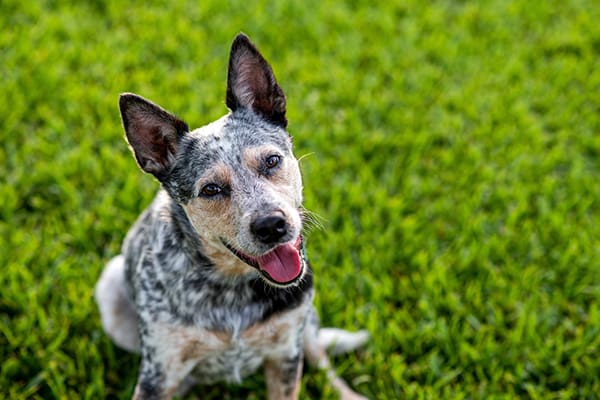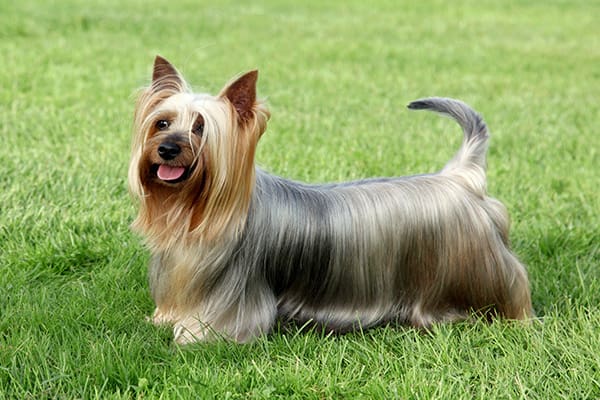Petcover is proud to partner with Pet Stays Melbourne!
Award-Winning Dog Boarding, Doggy Daycare & In-Home Pet Care with Pet Stays Melbourne
Read more18 September 2024
The Kelpie breed has developed into two distinct strains; the original ‘Working Kelpie’ and the more recent ‘Bench Kelpie’.
Both strains are athletic with muscular shoulders and a strong hindquarter. They are approximately 51cm at the wither, though the ‘Working Kelpie’ is slightly smaller than the ‘Bench Kelpie’. Both have a double coat that is short, dense and come in a variety of colours.
The working Kelpie is traditionally black and tan, though it may also appear in red, blue or fawn, with or without tan. Unlike the Bench Kelpie, the Working Kelpie is maintained in ‘working condition’, with a very trim, muscular physique devoid of unnecessary bulk or flab.

Kelpies are hardworking and intelligent. The bond between a ‘Working Kelpie’ and a stockman is undeniable and often stockmen can then rely on this bond to be strengthened as the dog matures, making it easier to train. Both strains of Kelpie are extremely loyal, to their owner and even ‘Bench Kelpies’ are often said to be a ‘one man dog’.
The Kelpie was first registered as a breed in Australia in 1902, and is one of the earliest registered breeds in Australia. The Kelpie is an iconic Australian dog; however, the breed’s origins lie in Scotland, where a number of collie-types contributed to the development of the Kelpie breed we know today.
In the early 1800s many breeds were brought to Australia to manage the imported sheep population; however, few fared as well as the Kelpie. The Australian Working Kelpie was integral part in the development of Australia’s sheep farming enterprise, and continues to play a major role as a working breed today.
It is believed that the Kelpie was named after a mythological figure from Celtic folklore. Kelpie is the Gaelic word for ‘Water Sprite’. There is a legend that a Dingo was the sire of “Kelpie”.
If you choose to keep a Working Kelpie or a Bench Kelpie as a pet, they can be a high maintenance dog. Daily, extensive exercise is required, obedience training is essential, and any animal that is not kept properly is prone to behavioural problems. Think carefully before adopting a working breed and be sure you can make the commitment to providing it with the lifestyle it requires. The Kelpie has a lifespan of approximately 12 – 15 years.
The Australian Cattle Dog (ACD) is robust, compact working dog with a muscled, powerful frame. It has a smooth double coat and colours include red speckled, blue, blue-mottled or blue speckled with or without other markings. Black markings are not desired in the show ring.

The Australian Cattle Dog is intelligent, loyal, and energetic, requiring firm, consistent guidance. They excel as watchdogs but can be reserved with strangers. Strong family bonds are formed, needing ample stimulation to deter boredom and destructive behaviour. Socialization and exercise are vital for a well-behaved Australian Cattle Dog.
The Australian Cattle Dog was created in Australia for herding cattle across rough terrain. Bred from domestic herding dogs and wild Dingoes, this sturdy breed emerged in the early 19th century. Known for their stamina and work ethic, Australian Cattle Dogs became vital to Australian ranchers.
The Australian Cattle Dog is also known as the Australian Heeler, Hall’s Heeler, Queensland Heeler and Blue Heeler. Puppies are born white because of a gene they inherited from the early Dalmatian crosses. You can sometimes tell the adult colour by looking at the paw pads.
Energetic and highly intelligent, the Australian Cattle Dog needs daily exercise for physical and mental fulfilment. Early training and socialisation are vital to avoid territorial issues. They enjoy tasks that engage their minds, with a lifespan of 12-15 years.
Australian Silkies are compact, moderately low set to the ground and are best known for their (you guessed it) long, soft, silky fur. Puppies are born black and tan. Most often their colour changes to a silver and tan with blue along the spine, but some dogs do not change colour.

The Australian Silky Terrier, like most terriers, is intelligent, very loyal and trainable, and may show signs of a defiant streak. Silkies are mischievous and may maintain a puppy-like attitude throughout it’s life. They are good guard dogs but are known for a tendency to bark a lot. Silkies have a lot of personality and are full of bravado. If a Silky is not properly trained it may become snappy.
The Australian Silky Terrier is one toy breed regarded as truly Australian and various parts of Australia have fought to claim the Silky as their own. Initially the breed was known as the ‘Sydney Silky’ due to the prominence of the breed in Sydney. But Victorian and Tasmanian breeders claimed to be the originators of the breed. In 1956 the name, Australian Silky Terrier, was officially adopted. Silkies were originally bred to kill rodents, and still posses ‘ratting’ characteristics; always watchful for scurrying prey.
The the Australian Silky Terrier may look precious but the breed is also known for killing Australian snakes!
They tend to devote themselves to one member of the family, usually the one who provides food, so experts recommend that a child feed the dog to assist with the Silky’s integration with members of the family. Silkies may be yappy and snappy so proper training and socialization is necessary. Obedience classes are recommended.
The Australian Stumpy Tail Cattle Dog is a bobtailed, medium sized dog. The breed’s most distinctive feature is the lack of a tail. When there is a tail, it is quite short, no longer than 10cm. Their coat is short, straight, dense and harsh and is a speckled red or speckled blue.

The typical temperament of the Stumpy is described as alert and watchful, as well as responsive to its owner and reserved around strangers. All working dogs need early socialization with people, and consistent training and activity throughout their lives.
The Australian Stumpy Tail Cattle Dog descended from Smithfield Cattle Dogs in England, which were brought to Australia in the early 1800s and crossed with the dingo.
Stumpy Tail Australian Cattle Dogs never have their tails docked. They’re just short!
Keep in mind that these dogs are working dogs. All working dogs need early socialization with people, and consistent training and activity throughout their lives. They require a lot of exercise and space to run and probably aren’t well suited to urban living.
The Australian Terrier is a sturdy, short-legged, little dog and one of the smallest in the Terrier group. It’s coat can vary quite dramatically from tan to blue, sandy to red but is always a weatherproof double coat and about 5 cm long.

The Australian Terrier is tough and seriously cheeky with courage that reminds people of a much larger dog. Australian Terriers as fiercely loyal and very affectionate towards it’s immediate family. As such, it makes it a responsive and very protective companion. It wants to please its master and is more easily obedience trained than most other terriers; however, it is important to socialize this breed well as it may attempt to become the family’s “pack leader” and may snap at family members it imagines as “lesser”.
This breed was developed in Australia as one of the smallest working terriers. He was used for rodent and snake control, as a watchdog, and even as a shepherd and as a companion. This was the first breed to be recognized as native to Australia in 1868 and was officially recognized in 1933. It was first recognized by the AKC in 1960.
Its smaller cousin is the Australian Silky Terrier.
The Australian Terrier is fully of energy and extraordinarily intelligent so a daily walk is essential to keeping this dog physically and mentally content. As noted above, it is important to provide proper training from a young age and to socialize this breed well. The Australian Terrier typically has a lifespan of 12 – 15 years.
This blog was written by the furry family at Petcover Australia. Petcover Pet Insurance specialises in animal and animal industry insurance. Our practices keep the role that pet insurance plays in responsible pet ownership and the health of the pet at the forefront. For tips to keep your pet healthy, make sure you follow us on Facebook.